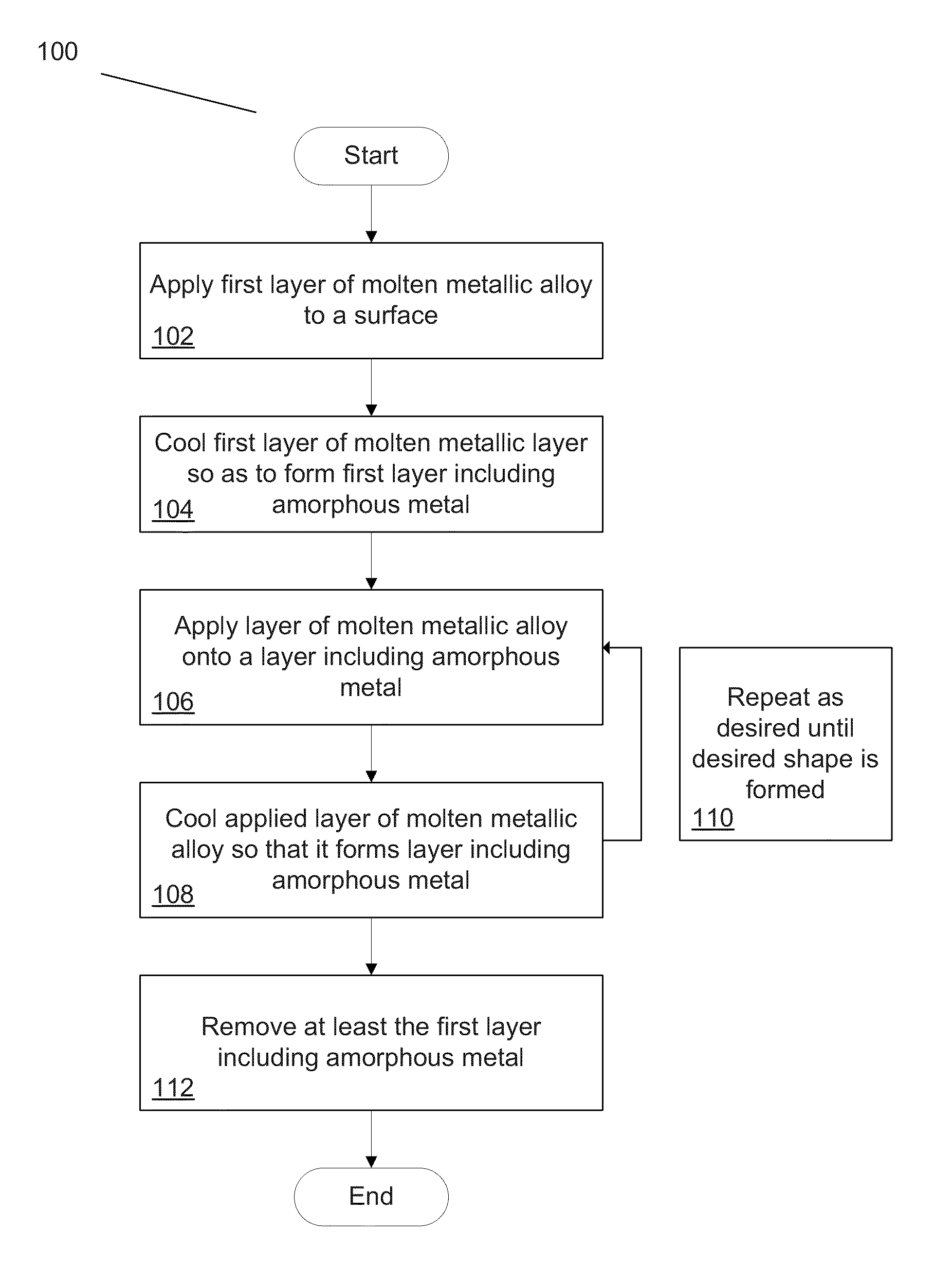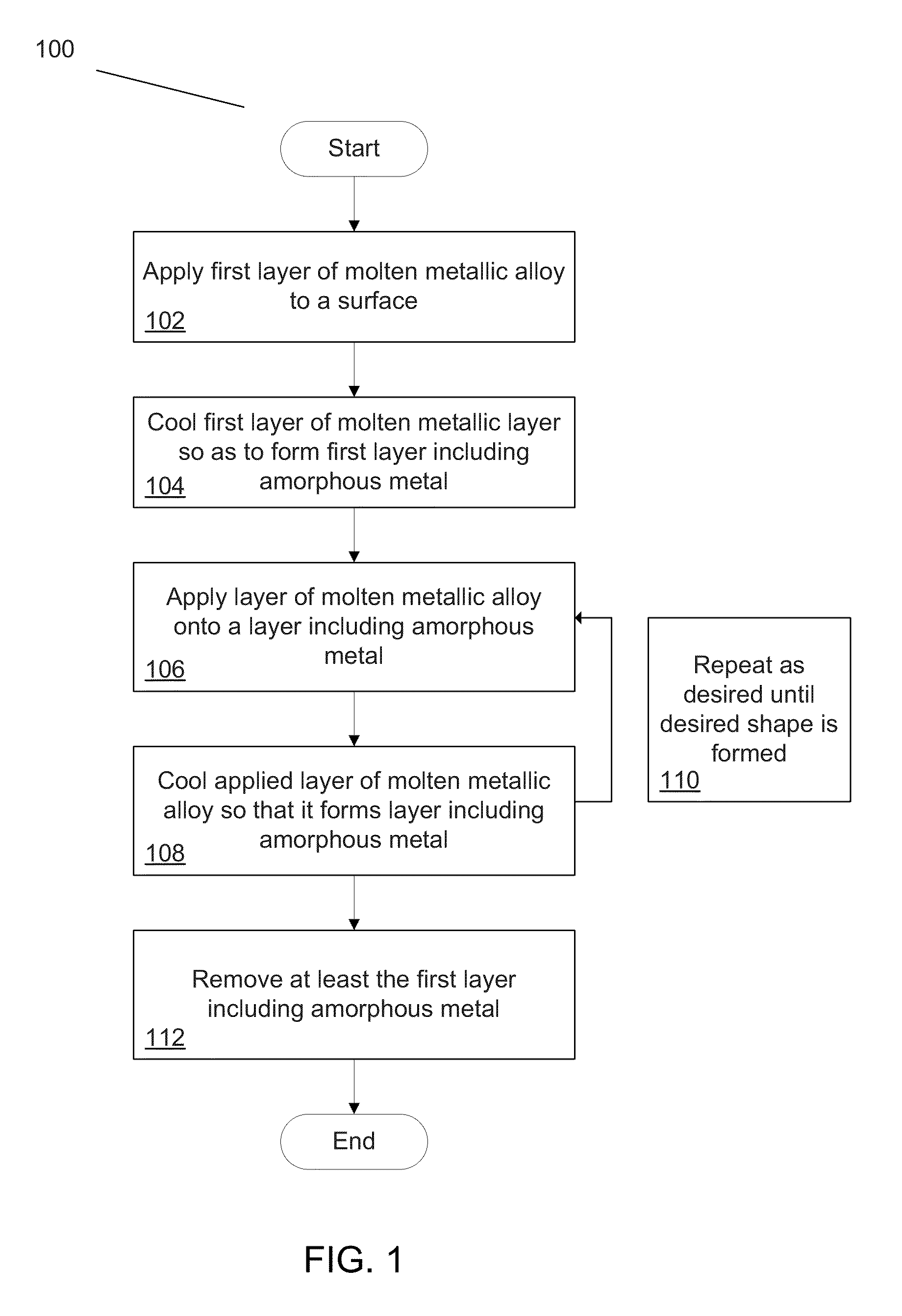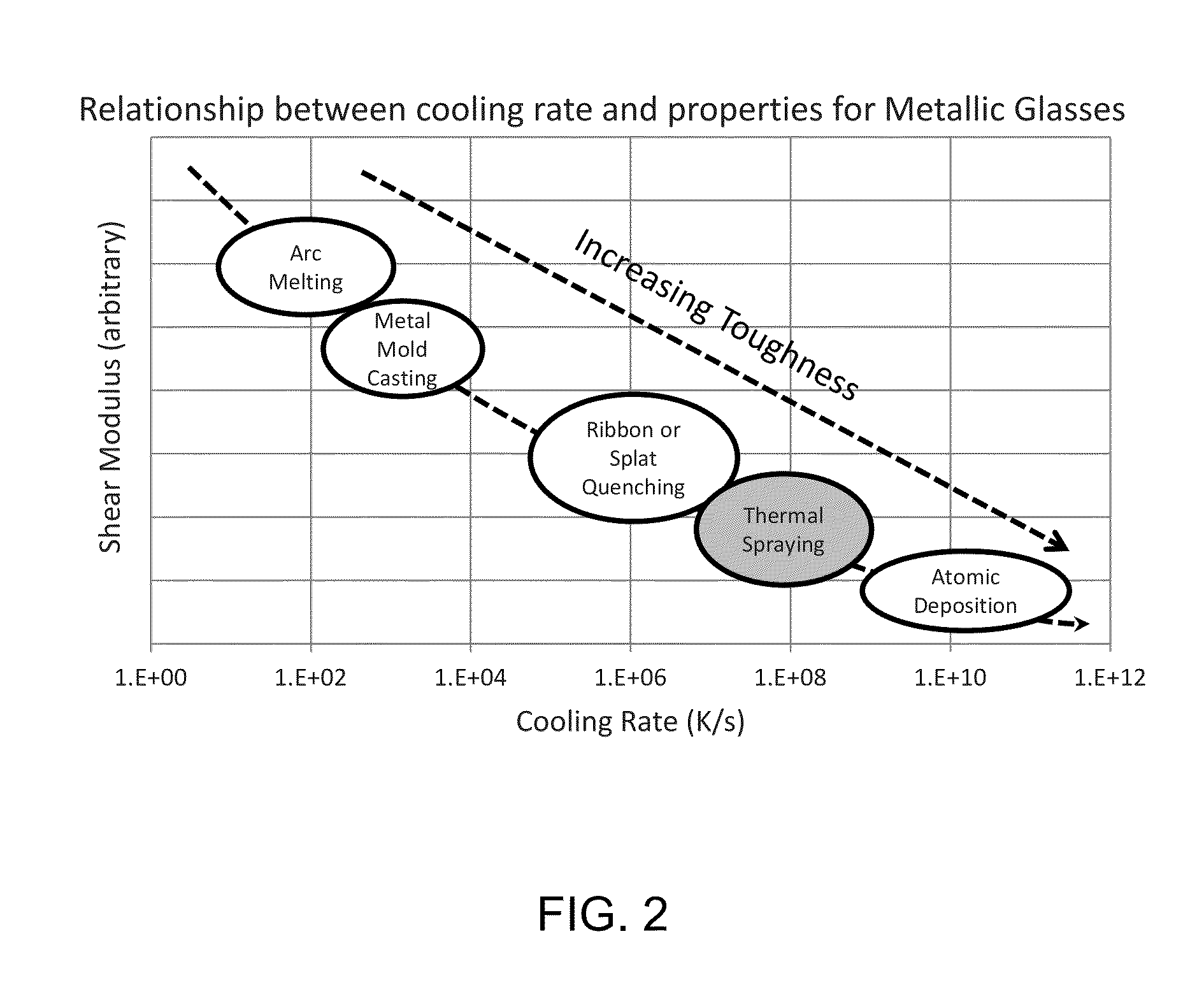Systems and methods for fabricating objects including amorphous metal using techniques akin to additive manufacturing
a technology of additive manufacturing and amorphous metal, which is applied in the direction of additive manufacturing apparatus, metal layered products, metal coating processes, etc., can solve the problems of limited thickness with which they could be formed, limited viability of engineering materials, and limited use of metallic glasses
- Summary
- Abstract
- Description
- Claims
- Application Information
AI Technical Summary
Benefits of technology
Problems solved by technology
Method used
Image
Examples
Embodiment Construction
[0058]Turning now to the drawings, systems and methods for fabricating objects including amorphous metal are illustrated. In many embodiments, a method of fabricating an object that includes amorphous metal involves applying successive layers of molten metallic alloy into the shape of an object to be formed, allowing each applied layer to solidify into a layer including amorphous metal prior to the application of a subsequent adjacent layer of molten metallic alloy. In numerous embodiments, cooling mechanisms are used to facilitate the cooling of the molten metallic layers so that they form amorphous metal. In a number of embodiments molten metallic alloy is sprayed into mold cavities which help define the shape of the object to be formed.
[0059]While amorphous metal compositions have been discovered that can allow the alloys to be cast into parts having a thickness greater than 1 mm (bulk metallic glasses), casting these particular compositions generally cannot be used to create an ...
PUM
| Property | Measurement | Unit |
|---|---|---|
| critical casting thickness | aaaaa | aaaaa |
| critical casting thickness | aaaaa | aaaaa |
| thickness | aaaaa | aaaaa |
Abstract
Description
Claims
Application Information
 Login to View More
Login to View More - R&D
- Intellectual Property
- Life Sciences
- Materials
- Tech Scout
- Unparalleled Data Quality
- Higher Quality Content
- 60% Fewer Hallucinations
Browse by: Latest US Patents, China's latest patents, Technical Efficacy Thesaurus, Application Domain, Technology Topic, Popular Technical Reports.
© 2025 PatSnap. All rights reserved.Legal|Privacy policy|Modern Slavery Act Transparency Statement|Sitemap|About US| Contact US: help@patsnap.com



